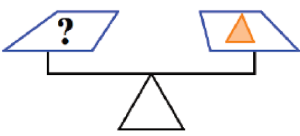1.2 The Balancing Act
The activities in this section are designed to use pictorial representations to help students understand equality in algebra and begin to work with algebraic equations.
The picture below shows a (very simplistic) two-pan balance scale. Such a scale allows you to compare the weight of two objects by placing one object in each pan. If one side is lower than the other, this indicates the lower side holds heavier objects. If the two sides are equally balanced, the objects on each side weigh the same amount.
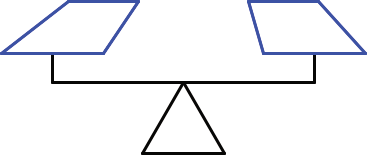
For the following activities, assume each triangle has the same weight, each circle has the same weight, each square has the same weight and each star has the same weight. Also, assume each scale is balanced.
Illustration: Based on the scale picture below we see that 2 triangles weigh the same as one triangle and 2 circles.
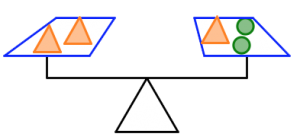
If we take a triangle off each side, the scale will still be balanced so we can also say that 1 triangle weighs the same as 2 circles.
Draw shapes on the scale below to represent this situation.

Other ways to describe this relationship between the weight of the circles and triangles are:
“1 triangle is twice the weight of a circle” or “1 circle is half the weight of a triangle”.
Examples
Example 1.2.1
Based on the scale picture below, what can you say about the relationship between the weight of a star and the weight of a circle? Explain how you determined your answer.
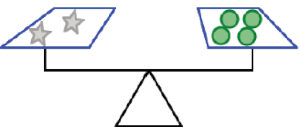
Based on the scale picture below, what can you say about the relationship between the weight of a star and the weight of a square? Explain how you determined your answer.
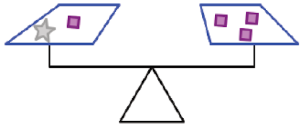
Example 1.2.2
Use Figure 1 to answer the questions that follow
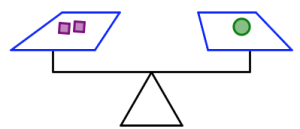
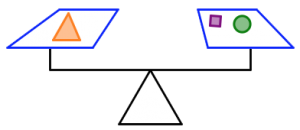
a) Which shape weighs the most? Justify your answer.
b) Which scale is holding the most total weight? How do you know?
Example 1.2.3
Use the first two scale pictures in Figure 2 to gather enough information to determine how many squares go in place of the question mark in the third scale picture. Show your work below .

Example 1.2.4
Use the top three scale pictures in Figure 3 to gather information to determine what shapes will balance the scale below. That is, what can we put in place of the question mark that will balance the scale? Try to come up with more than one answer. Explain how you arrived at your answers.
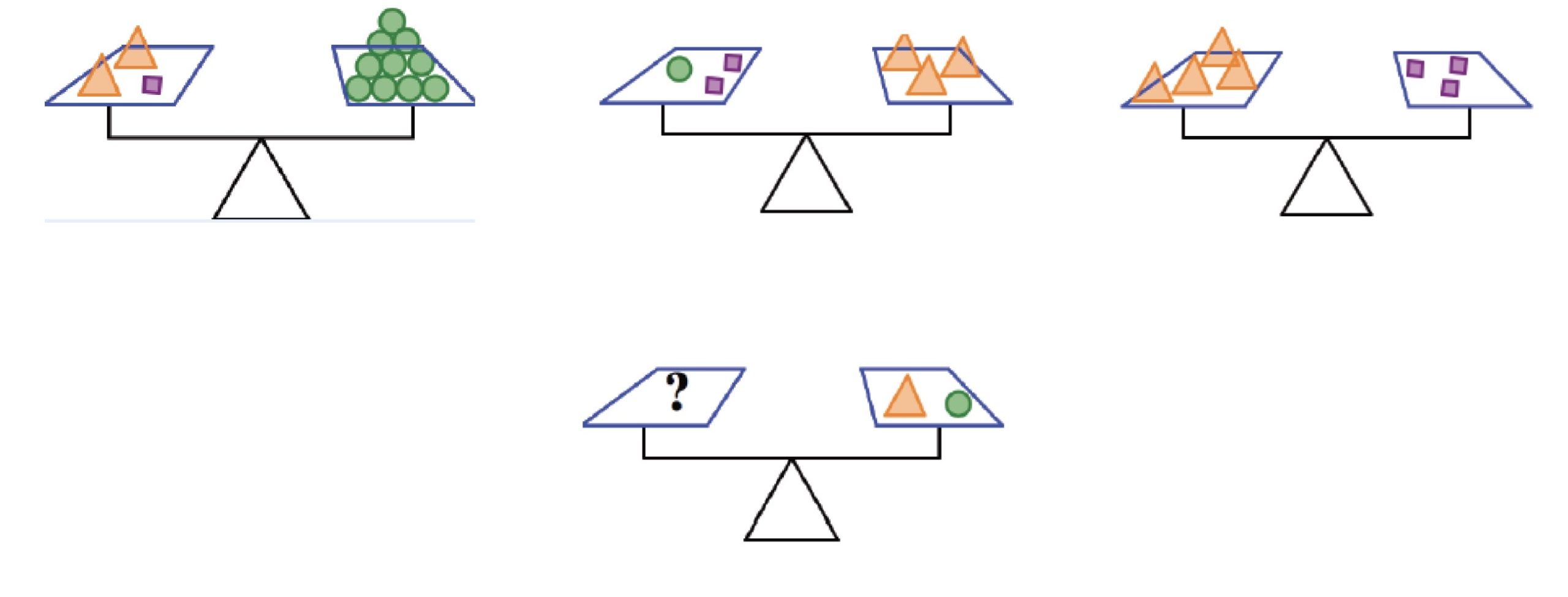
Example 1.2.5
Use the scale pictures in Figure 4 to gather information to determine how many squares go in place of each of the question marks in parts (a), (b) and (c) below.

a)
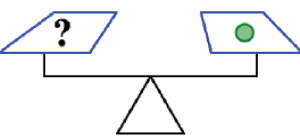
b)
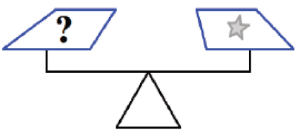
c)
